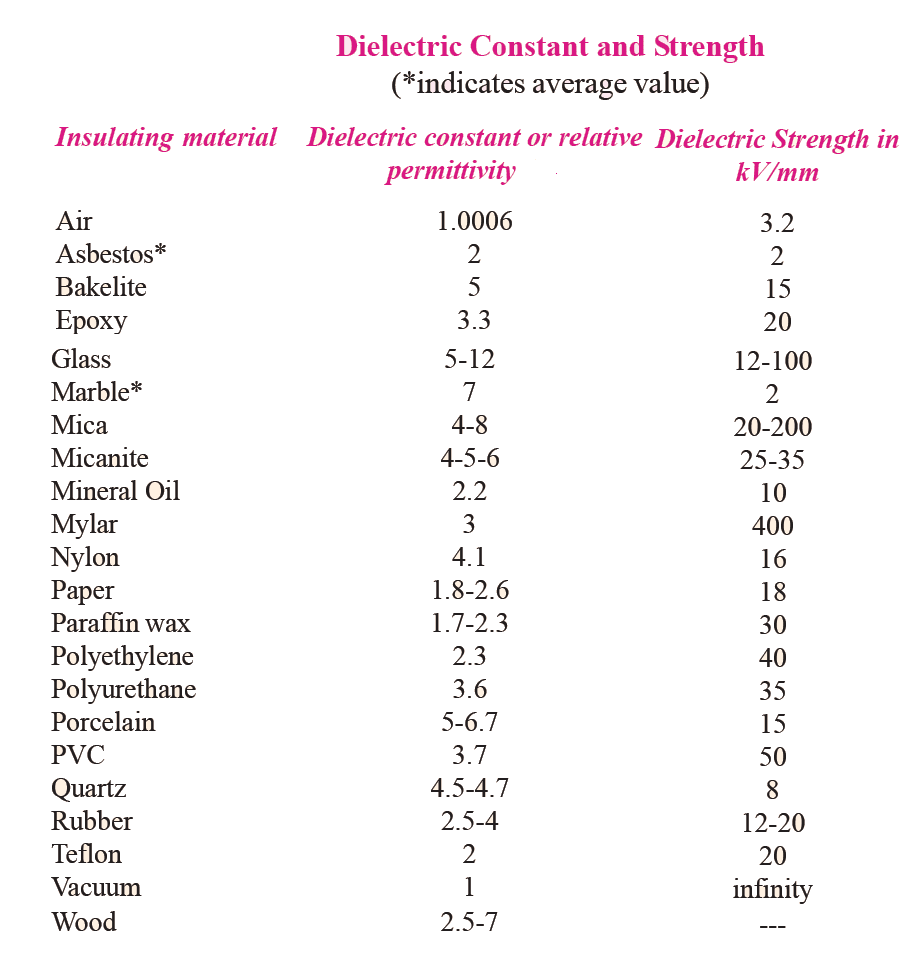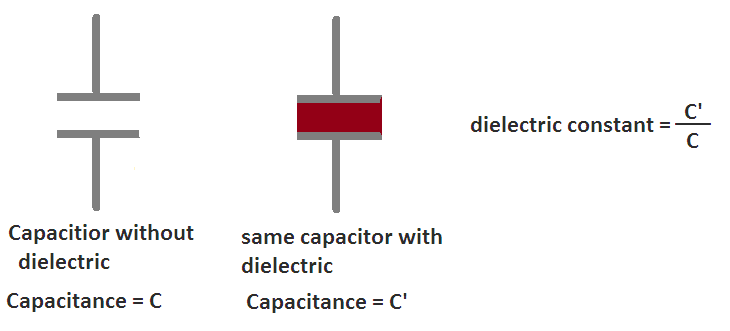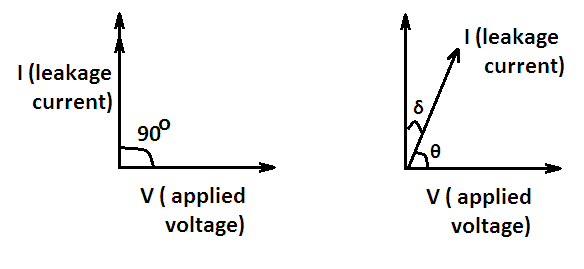Normally, no
current flows through insulators or dielectric materials. However, when the voltage applied to such materials exceeds a certain value, then it breaks down and a heavy electric current (much larger than the usual leakage current) flows through it. If the insulator is a solid medium, it gets punctured or destroyed.
Dielectric Strength Definition
The
dielectric strength is a property of a material which enables it to withstand electric stress without damage. It is usually expressed in terms of minimum electric stress (potential difference per unit distance) that will cause breakdown of dielectric under certain conditions of service.
The dielectric strength of an insulator or dielectric material is given by the maximum potential difference which a unit thickness of the material can withstand without breaking down. It is usually expressed in kV/mm.
For example, when we say that the
dielectric strength of mica is 60 kV/mm, then it means that the maximum potential difference which one mm thickness of mica can withstand across it without breaking down is 60 kV or 60000 volts. If the potential difference exceeds this value, then mica insulation breaks down allowing a large
current to pass through it.
The dielectric strength of various insulating materials is a very important factor in the design of high voltage electrical machines. It is usually adversely affected by moisture, contamination, elevated temperature, aging and mechanical stress.
Dielectric Constant
It is also known as relative permittivity. We know that the capacitance of a
capacitor depends upon the surface area of plates, the thickness of the dielectric and also on the nature of the material of the dielectric (i.e. dielectric constant).
From experiments, it is found that if the air is replaced by a dielectric of dielectric constant k in a capacitor, the value of
capacitance is largely increased.
Dielectric Constant Definition
Dielectric constant is the ratio of the capacitance of a capacitor having a certain dielectric to the capacitance of the same capacitor with vacuum (or air) as the medium. - Let there be a parallel plate capacitor of capacitance C, which has no dielectric material.
- and when we place a dielectric material between its plates, its capacitance becomes C’.
- then, the dielectric constant of the dielectric material will be C’/C.
Materials having a high value of dielectric constant are generally preferred for making
capacitors of high capacity.
In most applications, the insulation consists of two or more insulating materials in series.
The importance of dielectric constant lies in the fact that when an alternating voltage is applied to such a composite insulation, the voltage distribution across the insulation is found in inverse proportion to the dielectric constants of the materials involved.
For example, suppose there is an equal thickness of oil of dielectric constant 3 and paper of dielectric constant 4 in series. When a voltage is applied across it, 57% of voltage act across the oil and 43% across the paper.
Therefore, while designing a composite insulation care must be taken that the composite insulating materials have an appropriate dielectric constant in order that dangerously high voltage does not appear across any one of them.
Dielectric Loss
When a perfect insulation is subjected to AC voltage, it is like applying AC voltage to a perfect
capacitor. In such a case, the charging current will lead the applied voltage by 90
o exactly and there will be no consumption of power. Only vacuum and purified gases approach this perfection.
Dielectric Loss Definition
In most insulating materials that is not the case. There is a definite amount of dissipation of energy when an insulator is subjected to AC voltage. This dissipated energy is known as the dielectric loss.
In commercial insulators, the leakage
current (a current that flows to earth through the insulator) does not lead the applied voltage by exactly 90
o. The phase angle is always less than 90
o. The complementary angle δ = 90 – θ is known as
dielectric loss angle.
For an insulator having a capacitance
C and having a voltage
V applied to it at a frequency
f Hz, the
dielectric power loss can be calculated as:
P = V22πfC tan δ watts
From the above equation, it is clear that power loss is dependent on tan δ so long as other factors are constant. Tan δ is known as
power factor of the insulator.
Thanks for reading about “dielectric strength definition, dielectric constant definition and dielectric loss definition”.
Related Posts
- Dia Para Ferro Magnetic Materials
- Applications of Soft and Hard Magnetic Materials
- Why CRGO core is used in transformers?
- Properties of High Resistivity Materials
- Properties of Insulating Materials
- Applications of Insulating Materials
- Properties of Superconductors
- Dielectric Strength | Constant | Loss | Definition
- Creep in Materials
© https://www.yourelectricalguide.com/ dielectric strength definition, dielectric constant definition and dielectric loss definition.


